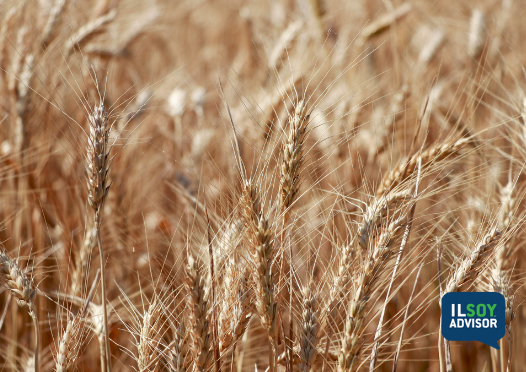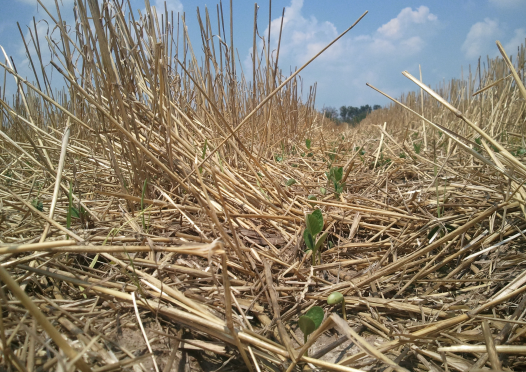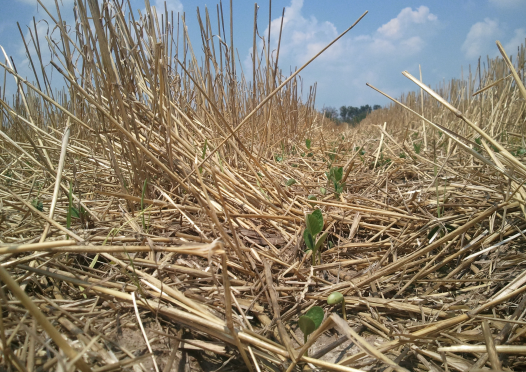ILSOYADVISOR POST
Set Yourself up for Success in Double-Crop Soybeans.
Double-cropping soybeans can be a success with the right plan in mind.
There are several things growers need to do to set themselves up for success when planting double-crop soybeans after wheat.
First, ensure you get a good, even distribution of harvested materials as you cut wheat. Make sure to have a properly adjusted combine to manage the residue not only in the machine, but that it can evenly distribute that residue behind the machine. Good, even distribution of residue will help to ensure good seed to soil contact and good even emergence of soybeans
Next, do a good job with seed selection. I like to plant late Group 4 or early Group 5 beans that have tall and bushy traits with high scores for resistance to SDS and Phytophthora Root Rot. Remember you are planting late for the most part and are planting into a harsh environment. Plants must grow out of the straw, which is why I like a tall bean. And you may not get a good uniform stand, another reason why I like a bushy bean. It may be very wet or very dry when planting, which is why I like SDS and Phytophthora resistance.
Seed treatment. This is not a place to skip and save money. You need to plant treated seed. Again, you are planting into a harsh environment and seed treatment will help protect the seed if it lays there in a dry environment or help with emergence and prevent seedling diseases if it’s in a wet environment.
Make sure soil fertility is in good shape and apply P (phosphorus) and K (potassium) as needed. If you didn’t apply P and K for the beans when you planted your wheat crop, take into consideration fertilizing those beans. Especially pay attention to potash. Potash deficiency can show up even in good-testing soils when it gets hot and dry in August. The last few years have seen increased symptoms of K deficiency in soybeans in southern Illinois.
Make sure your planter is in good shape and capable of planting through the straw and residue. Ensure you are planting into the soil and not into the straw. Check down pressure and closing wheels to make sure that once you open the seed slot you can close it.
Last, and maybe the most important of all, is good weed control. Start clean stay clean! Many farmers make the mistake of waiting to see what kind of stand they have before they try to control weeds. Just as with full season beans, weeds early hurt yield. They can rob both nutrients and water from young seedlings. Start clean stay clean for best results.
These simple things, which are no different than for full season soybeans, are often neglected for double-crops because we treat our double-crops as an afterthought. Double-crops are a profitable part of the wheat/double-crop soybean rotation. Set yourself op for success by treating your double-crops as you would your full season beans and plan before wheat is harvested.





Comments
Add new comment